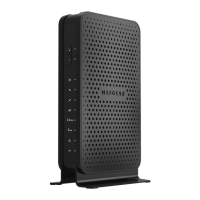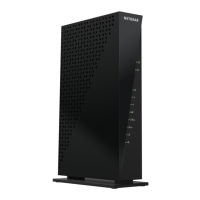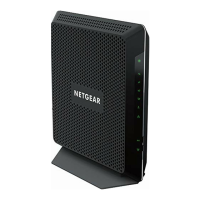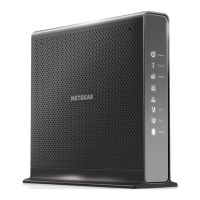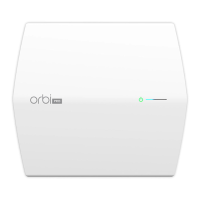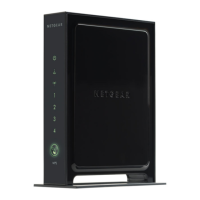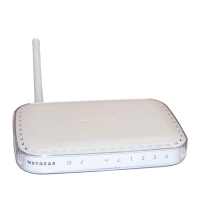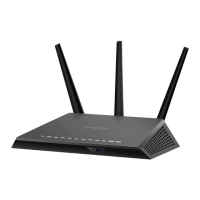Specify Network Settings
62
N300 WiFi Cable Modem Router Model C3000
6. In the Network Profiles (2.4 GHz b/g/n) list, select the radio button for the SSID (WiFi
network) that you want to use the access list for.
7. Select the Turn Access Control On check box and select one of the following radio
buttons:
• Allow List. Allow computers and devices in the list to connect with WiFi.
• Deny List. Deny WiFi access to computers and devices in the list.
8. Click the Add button.
The screen displays a list of available wireless cards.
9. To add a device from the Available Wireless Cards list, do the following:
a. Select the device.
b. Click the Add button.
The device displays in the wireless card access list.
10. To add a computer or device that is not in the list, do the following:
a. Type a name in the Device Name field.
b. Type the MAC address in the MAC Address field.
The MAC address is found on the computer or device.
c. Click the Add button.
The device displays in the wireless card access list.
11. Click the Apply button.
Your changes are saved.
Dynamic DNS
If your Internet service provider (ISP) gave you a permanently assigned IP address, you can
register a domain name and have that name linked with your IP address by public Domain
Name Servers (DNS). However, if your Internet account uses a dynamically assigned IP
address, you do not know in advance what your IP address is, and the address can change
frequently. In this case, you can use a commercial Dynamic DNS service. This type of service
lets you register your domain to their IP address and forwards traffic directed at your domain
to your frequently changing IP address.
If your ISP assigns a private WAN IP address (such as 192.168.x.x or 10.x.x.x), the Dynamic
DNS service does not work because private addresses are not routed on the Internet.
Your modem router contains a client that can connect to the Dynamic DNS service that
DynDNS.org provided. First visit their website at http://www.dyndns.org and obtain an
account and host name that you configure in the modem router. Then, whenever your
ISP-assigned IP address changes, your modem router automatically contacts the Dynamic
DNS service provider, logs in to your account, and registers your new IP address. If your host
name is hostname, for example, you can reach your modem router at
http://hostname.dyndns.org.
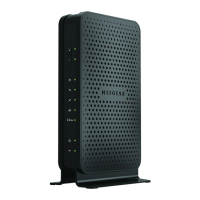
